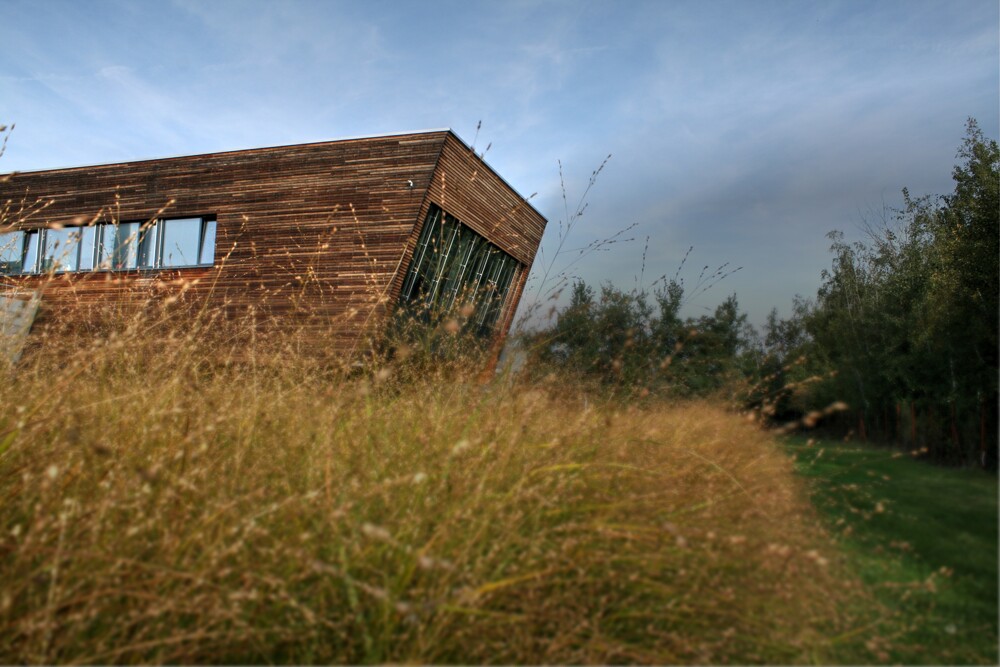

Turning a dry and hot desert into a green landscape sounds like a dream or a fairy tale at this point. In practice, such a transformation would require a large amount of water. But where to get such a quantity of water in the desert? Using the Sun from the ai?!?Even in the desert, the air contains water vapor. But the climatic conditions of the desert do not allow easy extraction of water from the air using a conventional cooler, on which water vapor condenses at a low temperature. This can be realized in the climatic conditions of Europe, but not in a barren area suffering from a lack of water.
A device that can turn a dry desert into an oasis through the targeted propagation of microorganisms may sound a bit like science fiction. But the research and development is based in part on the science fiction genre and thus points to the technologies of the future. The Solar Air Water Energy Resource (SAWER) consists of two systems, one to harvest water from the desert air and the other to cultivate the desert into fertile soil.
The system for extracting water from the air, in the development of which the University Center for Energy-Efficient Buildings and the Faculty of Mechanical Engineering of the Czech Technical University in Prague participated, is used as a two-stage system, in which a desiccant is used in the first stage - a material that binds water vapor to its surface by adsorption. It removes the water content from the outdoor air and retains it on its surface. The dehumidified air is discharged back into the outdoor environment. At the same time, additional outdoor air with its natural water vapor content is sucked into the system, which is first heated to such a high temperature that it is possible to release water vapor from the surface of the desiccant and thereby moisten the desert air. Air at an elevated temperature can bind a larger amount of water vapor. Air that is significantly more humid than the outside air from the desert then arrives at the cooler. Thanks to this, the cooler can get much more water by condensation from the air.
While an average of 10 l/day can be obtained from the desert air with a conventional cooler, an average of up to 200 l/day can be obtained with the SAWER device at comparable flows of treated air. The main feature of the SAWER system is autonomous operation. The energy needs of the system are fully covered by solar energy (solar photothermal collectors, photovoltaic modules, heat and electrical energy storage). The by-product of the technological system is then hot water for showering and cold air for the building's air conditioning.
SAWER - desert cultivation technology
The Botanical Institute of the Academy of Sciences of the Czech Republic is developing a system for cultivating the desert, which uses part of the collected water for a special photobioreactor, an artificial environment used to cultivate microalgae for the purpose of producing polysaccharides and retaining nutrients in the water. The mixture of water, algae and organically bound nutrients is applied in the form of a watering system located about 20 cm below the soil surface. Plant roots get water with nutrients directly from the watering pipe. This will significantly reduce water loss through evaporation, which is especially important in dry areas with high levels of solar radiation. By watering with water containing algae, both nutrients, which can be slowly released, and other substances contained in algae, such as plant hormones and organic matter needed for successful plant growth, reach the soil.
Before planting, the sandy soil is enlivened with microorganisms that are beneficial for plant growth, help the plant obtain nutrients more efficiently, and increase water retention in the soil layer around the roots. These organisms, soil symbiotic mycorrhizal and endophytic fungi functioning in the root system, in cooperation with other soil organisms, revitalize the soil so that it becomes suitable for cultivation even in such extreme conditions as found in the desert.
The University Center for Energy Efficient Buildings (UCEEB) and the Faculty of Mechanical Engineering of the Czech Technical University in Prague participate in the development of SAWER technology in cooperation with the Botanical Institute of the Academy of Sciences of the Czech Republic.

Koncepce pavilonu - EXPO 2020